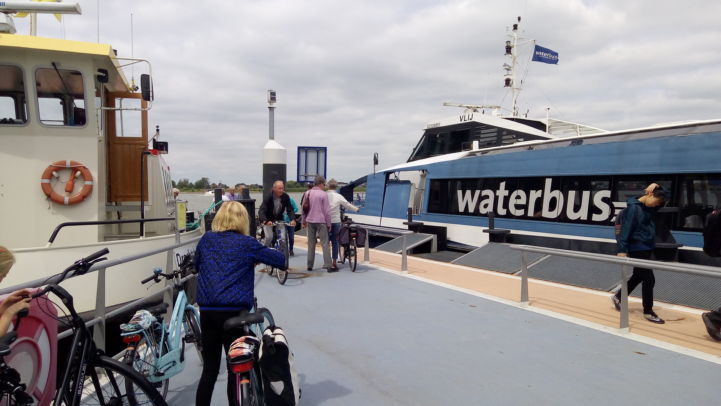Planning successful cycle routes: EuroVelo 19 as a best practice example – Part 3

For millennia, rivers have played a central role in transportation networks. No wonder, the EuroVelo network also comprises three routes that follow a river from spring to mouth, EuroVelo 15 – Rhine Cycle Route, EuroVelo 17 – Rhone Cycle Route and EuroVelo 19 – Meuse Cycle Route. Many other incorporate river routes, for example the Danube Cycle Route and La Loire à Vélo are both parts of the EuroVelo 6 – Atlantic - Black Sea.
The apparent advantage of cycling along a river is a flat elevation profile. This increases the accessibility of cycling routes also to less experienced cyclists and families. Hence, river cycling routes constitute perfect backbones, a concept introduced in the first article of this series, for regional cycling networks, as discussed in the second article. However, there is also the challenge of crossing the river – if left unaddressed, it can be a huge barrier, but if done properly, it can be an attraction on its own.
Ferries, bridges and tunnels
As a river route, EuroVelo 19 runs sometimes left of the Meuse, sometimes on the right, sometimes on both banks. Route planners need to consider the existing infrastructure and possibilities to cross as well as the connections to the regional cycling networks on both sides of the river when they decide on which side(s) the itinerary should run. Along EuroVelo 19, there are 32 ferries and numerous bridges across the Meuse. There are also two tunnels under the river (the third is already under construction). Here are a few remarkable examples.
Le Passage D'eau De Waulsort has been a free public service since 1871 and is the last place on the Meuse where you will be transferred from one side to the other as before. From Hastière, the Meuse route towards Dinant first runs on the right side of the river and then crosses to the left via the dam and the island of Waulsort. But if you feel a bit more adventurous, you can also follow the right bank behind the dam until you reach a tiny ferry, which hangs from a cable, on which the ferryman pulls.

The Passerelle La Belle Liégeoise is a pedestrian and cycle bridge built in 2016 in the centre of Liège, linking Liège-Guillemins station with the Parc de la Boverie on an island on the Meuse, through which the Meuse route runs. The suspension bridge is named after the nickname of Anne-Josèphe Théroigne de Méricourt, who fought for women's rights during the French Revolution. The Maasbrug (Meuse bridge) is a rather uninspired name for new bicycle bridge between Cuijk and Mook. Construction began in June 2019 and was completed in September 2020. The bridge shortens the cycling distance between the two towns by 5 km. It is the most important part of the MaasWaalpad, a fast cycle route from Cuijk (Noord-Brabant) to Nijmegen (Gelderland) which offers a pleasant side trip, almost all the way through the forest (not so common in the Netherlands). The asphalt road surface of MaasWaalpad is surprisingly sandy yellow, not red like most other cycle paths throughout the country, to fit better into the natural environment.

The Benelux tunnel, west of Rotterdam, has been connecting the city of Vlaardingen with business parks on the southern bank of the Nieuwe Maas since 1967. Originally, the tunnel only served motorised traffic. Pedestrians and cyclists had to travel by ferry between Vlaardingen and Pernis. But in 2002, this was corrected and a bicycle and pedestrian tunnel, as well as a metro tunnel, were added during the reconstruction. Escalators and lifts provide access to the tunnel. To increase the perception of social safety, the entrances have been designed to let in as much daylight as possible. The tunnel itself is decorated with the words of Jules Deelder's poem "For Ari".
To be continued
This series of articles showcase the different aspects of a successful cycle route itinerary using EuroVelo 19 – Meuse Cycle Route as a best practice example. This article showed how the challenges of crossing a river can be turned into an accessible, fun and fulfilling cycling experience on its own. In the next and final part we will show how the Meuse Cycle Route fits in the wider context of EuroVelo, the European cycle route network.
Text and photos: Aleksander Buczyński